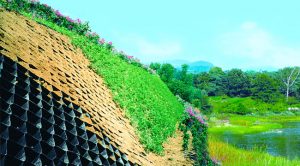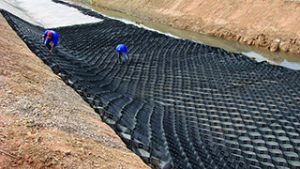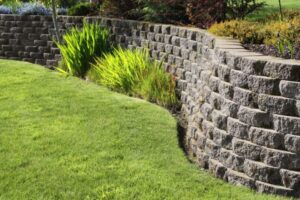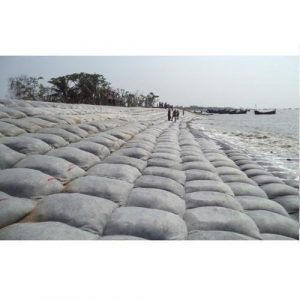The Benefits of Using Geocells

Geocells are a fabulous piece of technology that can provide a variety of benefits for your operations. If you’re looking to stabilize soil, prevent erosion, using Geocell for Slope Protection or create a new surface for parking or sports fields, geocells have the potential to do it all together.
Table of Contents
Overview about Geocells
Geocells are cellular confinement systems that were made as easy and durable materials that are utilized for stabilizing and protection. Cellular confinement systems adequately maintain the soil’s compaction, and, by doing the same, build a stronger structure for both the infill and pavement.
The cells’ 3D, honeycomb design assures that the Geocell is strong and durable. This format forms a structure that improves load distribution.
The cell is produced from high-density polyethylene (HDPE), which is utilized to stabilize weak or unsteady soil. That ability is a result of their ability to diminish lateral movement of soil particles while vertically loading on the contained infill.
Plus stability, Geocells as well provide a mattress effect and boost the elasticity of the materials. The cells have great elastic stiffness and great tensile strength, and due to this, they enhance the load distribution of the product.
A Geocell is a 3-D cellular structure that can be filled with soil, gravel, or other materials to fix steep slopes and conserve erosion. They are made of high-density polyethylene (HDPE) and have an open cellular structure that lets them conform to the terrain.
Geocell for Slope Protection are a revolutionary method of walling off and confining soil, aggregate, or any other infill materials. These three-dimensional cellular structures can be expanded at the time of installation so that they form flexible walls with interconnected strips reinforcing tensile strength while as well preventing movement by holding everything in place through compression increases due to environmental factors i.e., weathering.
When pressure is applied to the soil contained inside a Geocell, being in a load support application, lateral strains are produced on the perimeter cell walls. The 3D zone of confinement lessens soil particle lateral mobility, but vertical loading on the confined infill leads to considerable lateral stress and resistance at the cell-soil interface.
Geocells are utilized in construction to reduce erosion, stabilize soil, protect channels, and offer structural reinforcement for load support and earth retention.
Geocells were initially developed in the early 1990s as a way to improve the stability of roads and bridges. They rapidly gained popularity for their ability to stabilize soils and prevent erosion on steep grounds. Nowadays, geocells are used in a variety of applications, involving road construction, landfills, mining operations, and green infrastructure projects.
The Benefits of Geocells
Infrastructure development consists of designing and constructing structures while assuring that they do not have a detrimental influence on natural resources. Soil stabilization and reinforcement are a fundamental source of worry and a possible threat to the long-term stability of roads, bridges, and pathways.
Engineers profit from cellular confinement systems in a variety of methods, containing lower cost, improved weight-bearing capacity, and boost stability.
More benefits of using geocells include:
1. Stabilization of Steep Slope Surfaces by using Geocell for Slope Protection

Geocells are employed to protect slopes from erosion and assist in stabilizing the surface. The Geocell for Slope Protection conforms to the terrain and build a three-dimensional wall that prevents soil particles from moving laterally and this aid prevents landslides and keeps the slope stable.
Protective Linings of Channels & Hydraulic Forms

Geocells are as well employed as protective linings for channels and other hydraulic structures. The cells form a three-dimensional wall that conserves soil particles from entering the waterway and resulting in pollution. Additionally, the cells help diminish the erosion of the channel bed and sides. This extends the life of the structure and helps keep it in a working sequence.
3. Static & Dynamic Load Support on Low Subgrade Soils
Geocells are as well as used to support static and dynamic loads on weak subgrade soils. The cells build a three-dimensional grid that distributes the load over a larger area, which helps conserve soil failure. Plus, the perforations in the strips allow water to flow through, which helps maintains the soil moist and conserves it from becoming compacted. This improves the stability of the soil and lessens the risk of failure.
4. Multi-layered earth-retaining and water-retaining gravity structures
Geocells can also be employed to create multi-layered earth-retaining and water-retaining gravity structures. The cells form a 3-D grid that helps distribute the load over a larger area, which lessens the risk of failure.
Moreover, the perforations in the strips let water flow through, which helps keep the soil moist and prevents it from becoming compacted. This boosts the stability of the soil and reduces the chances of failure.
5. Durable infrastructure
Geocells are broadly utilized in civil engineering for road and pavement construction because they offer a flexible basis while keeping the soil intact. They conserve most of the stress cracking on paved roads because of their excellent load distribution capabilities. Plus, they assist to keep the surface level by adjusting to thermal expansion and contraction. This expands the life of the pavement and reduces the requirement for repairs.
6. Environmentally friendly
A cellular confinement system is an environmentally acceptable way of constructing green slopes or retaining wall systems. Without considerable digging, Ocean geocells can be filled with plants, concrete, or locally obtained materials like dirt or gravel.
FAQs
Is Geocell environmentally friendly?
Yes, Geocell is environmentally friendly as it is made from recyclable materials and promotes sustainable construction practices.
How is Geocell installed?
Geocell is typically installed by placing it on the prepared surface, connecting the panels, and filling the cells with soil or aggregate material.
Can Geocell be used for slope protection?
Yes, Geocell is commonly used for slope protection as it provides stability and prevents soil erosion on steep slopes.



